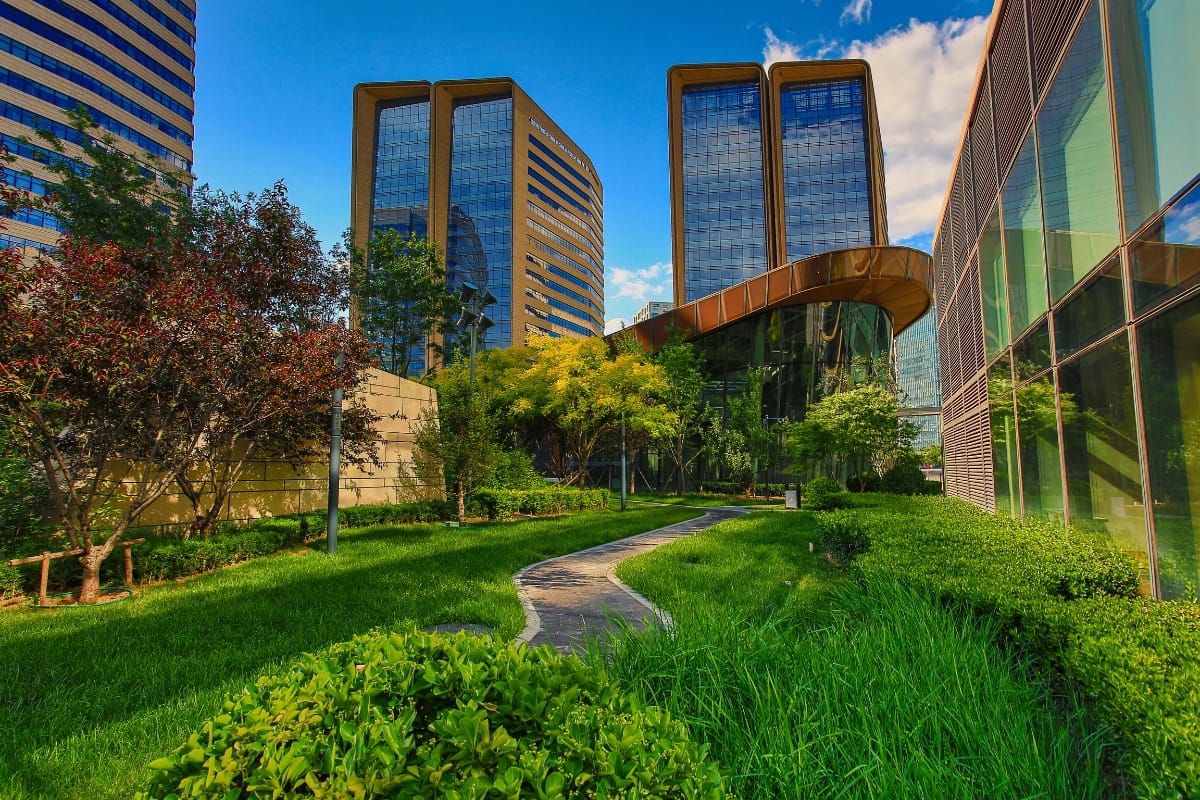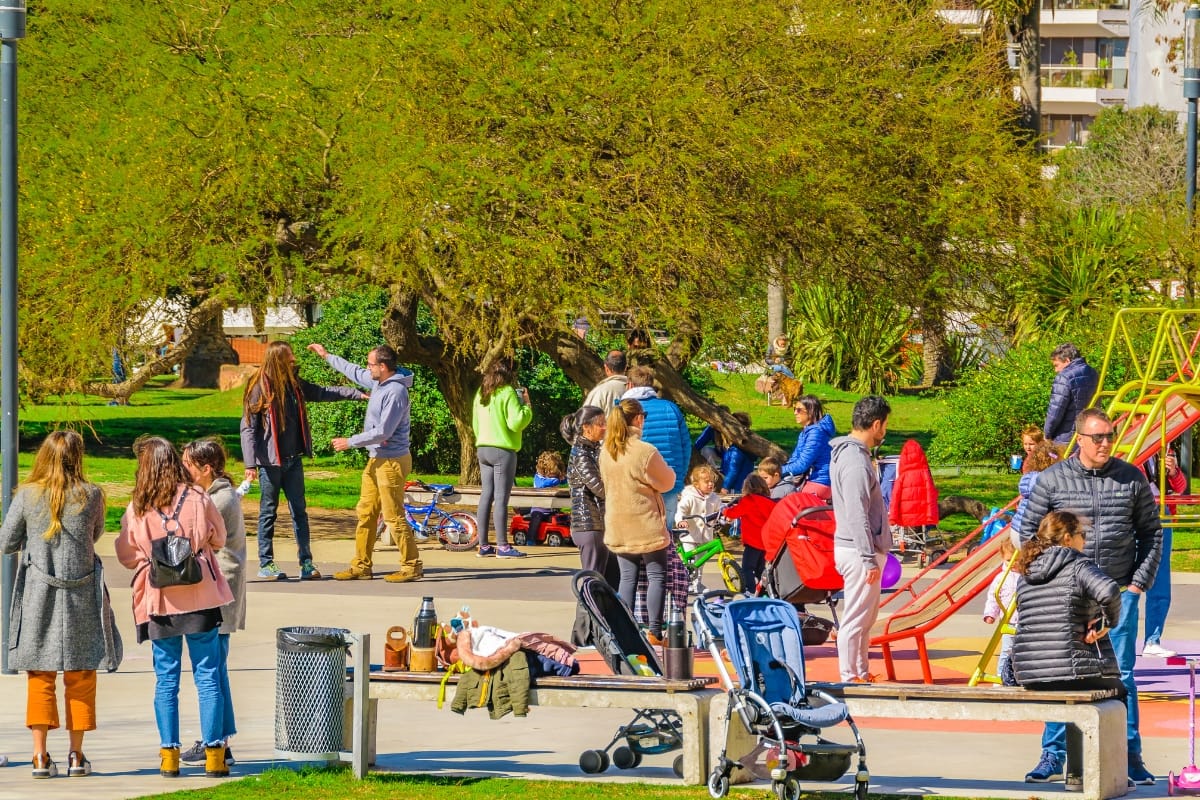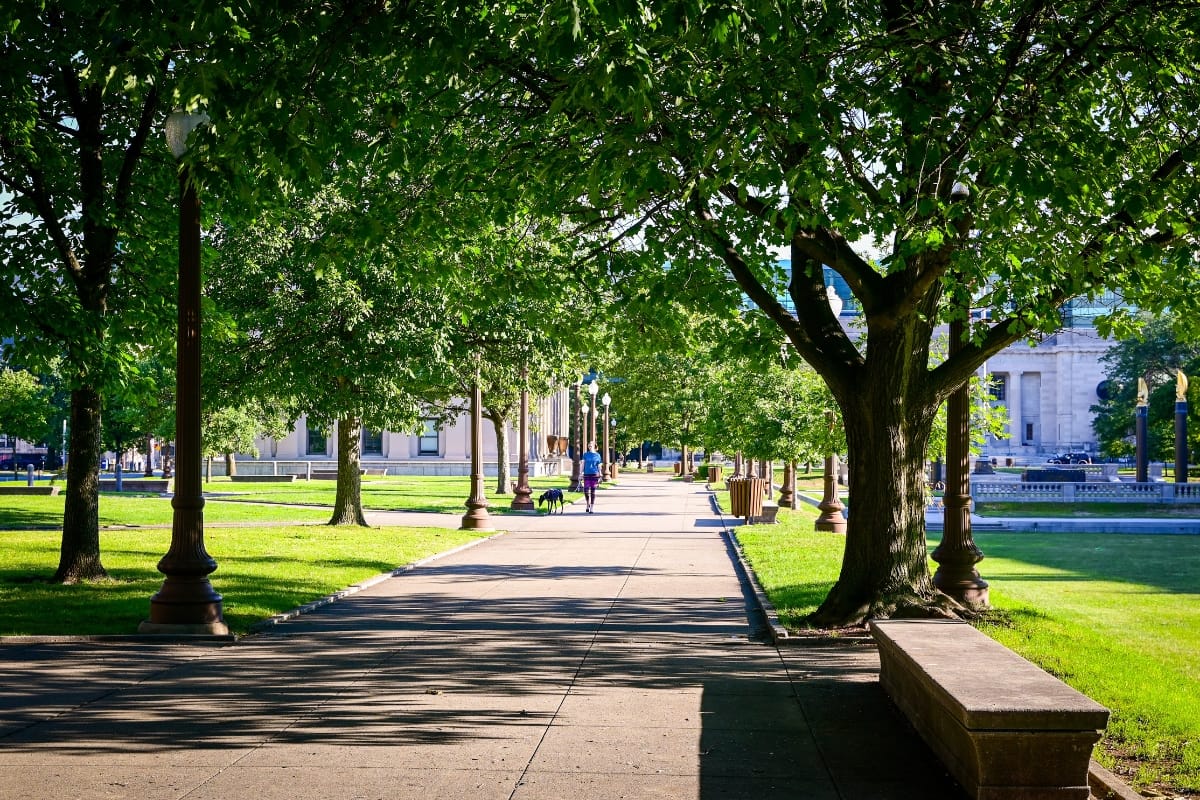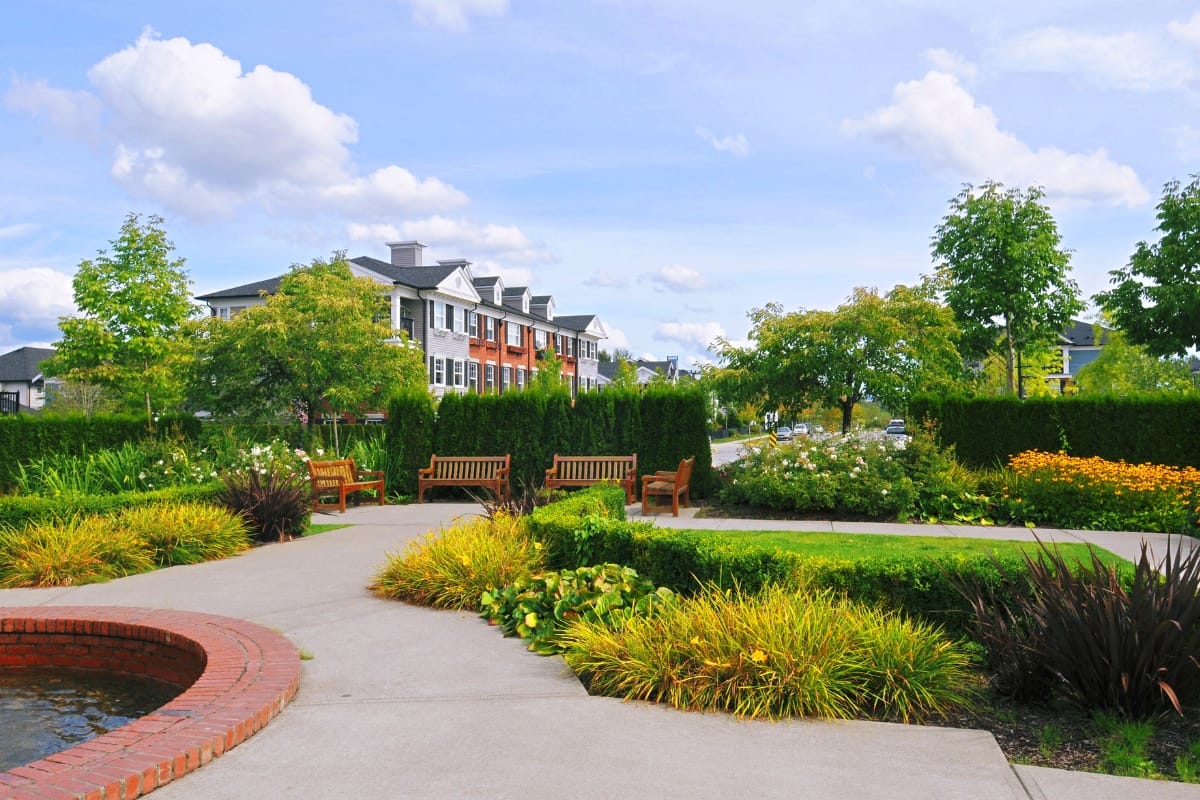Community green spaces are transforming urban living, offering more than just a break from concrete jungles—they are vital to creating healthier, more sustainable cities.
These green oases provide residents with places to relax, exercise, and connect with nature, all while improving air quality, reducing heat, and fostering biodiversity. In this guide, we’ll explore how community green spaces are reshaping urban environments, enhancing the well-being of residents, and promoting a healthier, more sustainable future.
Whether you’re a city planner, a resident, or an advocate for green living, discover how these spaces are becoming an essential part of urban life and driving the movement toward healthier, more vibrant communities.
Community Green Spaces: A Vital Ingredient for Healthy Cities
The Rise of Community Green Spaces in Urban Areas

Community green spaces are no longer just a luxury in urban areas; they have become a necessity. As cities continue to expand and green spaces dwindle, the need for these communal oases has never been greater. The rise of community green space is a response to the growing recognition that access to nature is crucial for our well-being and quality of life.
These green spaces come in various forms, from small pocket parks to rooftop gardens and community gardens. They provide a respite from the concrete jungle, offering a place where people can connect with nature, relax, and recharge. The popularity of these spaces is evident in their increasing numbers across cities worldwide.
One reason for the rise of community green space is the growing awareness of their health benefits. Numerous studies have shown that spending time in nature can reduce stress levels, improve mental health, and boost overall well-being. In urban areas where stress is often high and access to nature is limited, these green spaces offer a much-needed escape.
In addition to their health benefits, maintaining green spaces also play a vital role in fostering social interaction and community engagement. These community open spaces serve as gathering places where people can come together, interact with one another, and build relationships.
They provide opportunities for community events, such as farmers’ markets or outdoor concerts, creating a sense of belonging and strengthening social ties.
Health Benefits of Access to Nature in Cities

The importance of access to nature in cities cannot be overstated when it comes to our health and well-being. Research has consistently shown that spending time in natural environments has numerous positive effects on both our physical and mental health.
One significant benefit is the reduction of stress levels. Urban living can be hectic and overwhelming at times, but being able to retreat to nearby green space projects can help alleviate stress and promote relaxation. Studies have shown that even a short walk in nature can have a significant impact on reducing stress levels and improving mood.
Access to nature also encourages physical activity, which is crucial for maintaining good health. Community green spaces provide opportunities for outdoor exercise, whether it’s walking, jogging, or participating in group activities like yoga or tai chi. Regular physical activity has been linked to a reduced risk of chronic diseases such as obesity, heart disease, and diabetes.
Furthermore, spending time in nature has been shown to improve mental health. It can help reduce symptoms of anxiety and depression and improve overall psychological well-being. The tranquility and beauty of natural environments have a calming effect on the mind, promoting relaxation and mental clarity.
Designing Green Spaces for Well-Being and Social Interaction

The design of community green spaces plays a crucial role in maximizing their benefits for well-being and social interaction. Thoughtful planning and design elements can create spaces that are not only visually appealing but also functional and inviting.
One important consideration is the inclusion of diverse plant species that provide visual interest throughout the year. This ensures that the green space remains attractive even during different seasons. Incorporating native plants also helps support local ecosystems and biodiversity.
In addition to plant selection, amenities such as seating areas, walking paths, and gathering spaces should be incorporated into the design. These features encourage people to spend more time in the green space, fostering social interaction and community engagement.
Furthermore, accessibility is key when designing community green spaces. They should be easily accessible to all members of the community, including those with disabilities or limited mobility. Accessible pathways, ramps, and seating areas should be included to ensure inclusivity.
Environmental Impact and Climate Resilience of Community Gardens

Community green spaces play a crucial role in shaping urban environments and fostering a sustainable future. When considering the environmental impact and climate resilience of community gardens, it becomes evident that these green spaces are not only aesthetically pleasing but also serve as vital ecological components within urban landscapes.
By integrating community gardens into urban settings, cities can mitigate the adverse effects of urbanization on the environment. These green spaces act as carbon sinks, absorbing carbon dioxide from the atmosphere and helping to reduce greenhouse gas emissions.
Furthermore, community gardens promote biodiversity by providing habitats for various plant and animal species, thereby contributing to the overall health of urban ecosystems.
In terms of climate resilience, community gardens play a significant role in enhancing the adaptive capacity of urban areas to withstand the impacts of climate change.
These green spaces help to mitigate urban heat islands by providing shade, cooling the surrounding environment, and reducing energy consumption for air conditioning. Additionally, community gardens can help manage stormwater runoff, reducing the risk of flooding during heavy rainfall events and improving overall water quality.
Engaging Communities in Sustainable Urban Development

Engaging communities in sustainable urban development is key to the long-term success of community green spaces. When residents feel a sense of ownership and pride, these spaces become thriving, well-maintained areas that reflect the needs and desires of the people who use them.
A participatory design process is an effective way to engage residents. This approach allows community members to contribute their ideas and feedback during the planning stages.
By collaborating with local residents, designers can ensure that the green spaces cater to specific community needs—whether that’s playgrounds for children, quiet spots for relaxation, or garden beds for urban agriculture. This inclusion fosters a stronger connection between the community and the space.
Education and outreach programs play a critical role in sustaining engagement. Workshops on gardening, environmental conservation, or sustainable practices not only equip residents with skills but also foster a sense of responsibility for the green space’s upkeep.
Regular community events or volunteer days encourage ongoing participation and help build a strong, interconnected community that actively contributes to the success and sustainability of urban green spaces.
By integrating these strategies, cities can create vibrant, sustainable green spaces that serve as hubs of environmental education and social cohesion.
Economic Value and Property Benefits of Green Spaces

Community green spaces not only provide health and environmental benefits but also have economic value. The presence of green spaces can increase property values and attract businesses and residents to an area.
Studies have shown that properties located near green spaces tend to have higher market values. People are willing to pay a premium for homes with access to parks or gardens, as these amenities enhance their quality of life. Additionally, businesses often choose locations near green spaces to attract customers and create a more pleasant working environment for employees.
Furthermore, community green spaces can contribute to local economies by attracting tourism and creating job opportunities. Well-maintained parks and gardens can become tourist attractions, drawing visitors who spend money on accommodations, dining, and other local services. The maintenance and management of these spaces also create employment opportunities in areas such as landscaping, gardening, and event planning.
Challenges in Maintaining and Preserving Community Gardens

Maintaining and preserving community green spaces comes with its own set of challenges. These challenges must be addressed to ensure the long-term sustainability of these valuable assets.
- Limited Resources: One of the significant challenges in maintaining community gardens is the scarcity of resources. These green spaces often rely on volunteers and donations, making it challenging to ensure regular upkeep and sustainability.
- Weather Conditions: Weather fluctuations can also pose a challenge in preserving community gardens. Extreme weather events such as droughts, heavy rains, or storms can damage plants and disrupt the overall ecosystem of the garden.
- Pest Infestations: Another common issue faced by community gardens is pest infestations. Insects, rodents, or other pests can threaten the health of plants and require proactive pest management strategies.
- Community Engagement: Sustaining community interest and engagement in maintaining the gardens is vital but can be challenging. Keeping volunteers motivated and involved in gardening activities requires ongoing communication and coordination.
- Urban Development: As urban areas expand, community gardens face the threat of being replaced by commercial or residential developments. Preserving these green spaces in the face of rapid urbanization is a significant challenge.
- Sustainability Practices: Implementing sustainable practices such as water conservation, organic gardening, and composting can be challenging for community gardens with limited resources and expertise.
While community gardens offer numerous benefits for urban communities, including improved mental health, environmental conservation, and food security, overcoming the challenges in maintaining and preserving these green spaces is crucial for their long-term viability and impact.
Cultivating Wellness and Community in Urban Green Spaces
Creating vibrant community green spaces is key to transforming urban living for a healthier, more sustainable future. As cities continue to grow and space becomes limited, it is crucial to prioritize the creation and preservation of community green spaces.
Glover Landscapes is committed to helping you bring that vision to life with expert landscaping services tailored to your needs. Contact us today at (404) 510-6437 or get a free estimate through our website form for your next landscaping project. Let’s build greener, healthier communities together!


